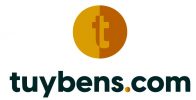Peter Tuybens: “For many companies, measuring ROI in terms of human capital is not obvious.
First of all, quantitatively: how much money is spent on people on top of labour costs and does this fit in with the strategy?
Secondly, qualitatively: which competencies do you need and how do you make the best match with the available talent?
This is how you optimise performance. We consciously associate this not only with costs, but rather with investments and performance”.
Peter: “Every study and in practice shows the major role of the relationship with the direct manager in staff turnover.
Satisfaction alone is no longer enough, there must also be commitment to the job and involvement with the company.
The role of the manager is crucial in this respect. It is striking that top and middle management often blame each other for a lack of leadership.
This often has to do with unclear mandates and communication. A lot of HR authority was delegated to direct line management,
HRM is too important to be dealt with by the HR department alone. Through an excellent business partnership, HR can also strive for “hot HR issues “to be tackled by the line’.
Peter: ‘The link with the strategy is of paramount importance. For this, HR and finance need to find each other. We have noticed that a lot,
even large companies do not have ready-made data at their disposal. HR is one of the last entities to be asked for figures in order to account for investments.
It was high time for this movement to get underway, because sometimes up to 60-70% of costs and investments go to people”.
Peter: “Make or buy? It goes to more complex connectivity.
A meaningful first phase is mapping out all the talent in the house.
I also prefer to talk about “allpo’s” or “all potentials” rather than hipo’s or high potentials. After all, talent is about more than just 5% of employees.
Today, we can measure this full talent potential through, for example, adapted online questionnaires.
If you aim for a maximum fit between what people want and the job requirements, you will get a higher ROI anyway.
It always starts with the question: what output do we want to achieve?
Then you can fill in the organisation with the talents that are present or still absent”.
Peter: “Even in the case of mergers and aquisitions, too little is done with human capital. When the assets are overflowing, this is often only seen as a cost, because – translated into euros – this makes it easy to make decisions. I am only now seeing the first signs that the real appreciation of human capital is beginning to gain in importance”.
Peter: “An HR manager is only credible today if he or she knows the business and its customers. Data helps with this. In our wallet exercise we make this tangible: how much money is spent on top of labour costs? The experience learns that this amounts to 2,500 to 3,000 euros per employee per year. By making such things demonstrable and discussable, you can put them on the table.
This attention is fairly recent, but I see it growing through better data analysis, among other things”.
